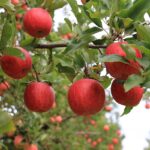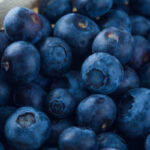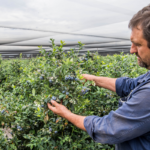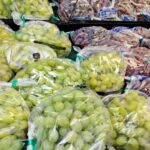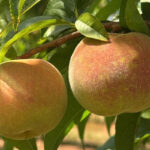Exotic fruits put Prime Tropics in prime spot for Guatemalan growth

After making the switch from coffee to rambutans with a heavy focus on the U.S. market, Guatemalan grower-exporter Prime Tropics is expanding into achacha and finger limes with Europe now also in its sights. 
In 2003, coffee grower Roberto Quintanal discovered the delicious taste and provocative hairy exterior of rambutans. He hasn't looked back since.
At the time the fruit was mostly imported from Honduras at high prices, even though it could grow quite easily in the Guatemalan landscape. With this in mind, the first tree was planted the following year with plans to develop domestic and export sales.
"We were about to throw the plantation aside because it was a highly delicate tree, but we said 'no, we'll wait and wait'," he said.
His persistence paid off. By 2007 Prime Tropics was harvesting its first fruit and started trading, although it was difficult at first to convince Guatemalan consumer.
The outlook now could not be more different with the company having not just convinced the locals (55% of the crop is sold domestically) but the U.S. market as well, which now accounts for 95% of exports. Today, the company has more than 500 hectares dedicated to the little red tropical fruit, yielding shipments of 1,500 metric tons (MT) annually.
"What's important for the company is keeping quality and delivering as quickly as possible. That's why all our shipments go by air, as it's a very delicate fruit and it deteriorates a lot traveling by land," Quintanal said.
European horizons
He said the group had GlobalG.A.P. certification and the next step was to increase exports to Europe, given it has met all the phytosanitary requirements demanded. The season for the company's three main crops - rambutans, achacha and finger limes - tends to run from May to November.
"We want to open more markets and Europe is very attractive as consumers show a lot of interest in exotic fruit.
"This year we want to be sending rambutan and achacha to London, where these fruits are highly valued, especially the achacha. It's difficult to open European markets, particularly because of the distance."
The achacha originates from the Bolivian Amazon, but curiously it was the Australian industry that brought it to global fame through high-end sales in Great Britain.
The fruit has an intense golden color which lends itself to the common name "fruit of gold" ("fruta de oro") in Central America, but after ripening at developed a reddish-orange tinge. Like its relative the mangosteen, its center looks like a little ball of cotton but with a bittersweet taste.
Quintanal described the fruit as the perfect mix between the flavors of mangosteen in rambutan, and mentioned this year the company forecast production of 500 metric tons (MT) grown on 70 hectares of orchards that are not yet in full production.
Just as Latin America's achacha has found a home in Australia's horticultural industry, a native Australian fruit has found its home in Guatemala with Prime Tropics - the finger lime.
Having a finger on the pulse in the world of exotic fruit
Prime Tropics brought the fruit, often described as producing 'citrus caviar', to Guatemala three years ago. As a fruit that has turned heads at trade fairs and restaurants alike, it offers a unique addition to gourmet cuisine and mixology.
"We planted Persian limes one season and they didn't go very well, however we believe finger limes will have more stable prices," he explained.
The group currently has five hectares dedicated to finger lime trees which should have their first fruit this year. However, commercial volumes won't be on-line until 2018, according to Quintanal.
"We have the hope to be able to send fruit to Europe, as they have more shelf life," he said.
The company also has production of mangosteens with 2,000 trees, and is also experimenting with red dragon fruit.
He added that more generally, Guatemala had great potential to become a supplier of exotic fruit around the world, mainly because of its climate.
"It has a lot of climates. In just three hours you can have a lot of cold and heat, and that's very good," he said.
Improving field management
With its crops in the zone of Coatepeque, south of Quetzaltenango, the Prime Topics has been working on improved agronomic practices for rambutans and achacha. The group has four specialized agronomists and personnel working in the fields with the aim of raising product quality.
"Unfortunately there is no book or manual about how to treat a rambutan tree. More than anything we've been making history with this crop," Quintanal said.
"We took time to choose the right variety, and between all the rambutan varieties we chose what we have planted at around 80% currently - the r-134 which is better known as the "red Hawaiian" - has given us the quality and size that we need.
"There is also all the agronomic management we do in the field such as irrigation, fertilizer, pruning, among other things."
[Not a valid template]www.freshfruitportal.com


















